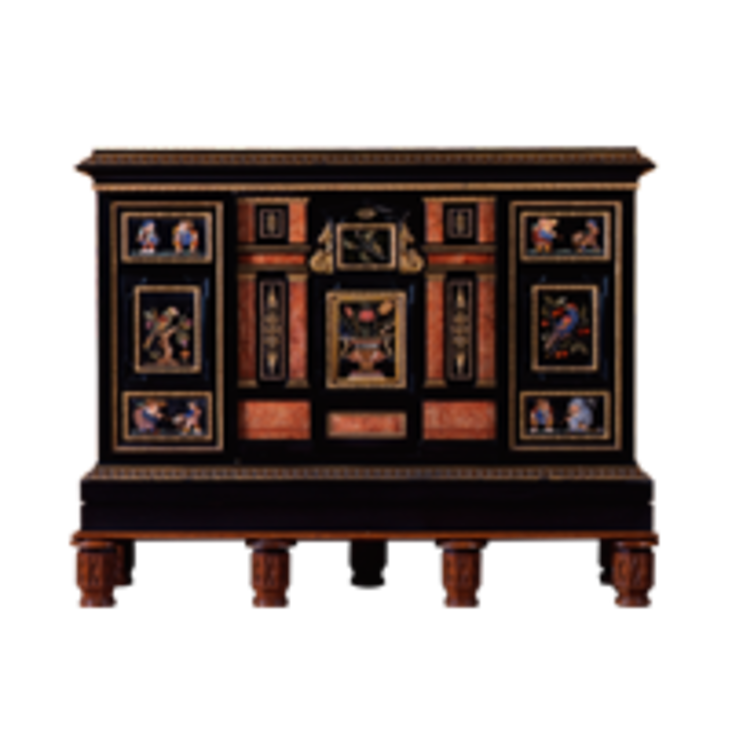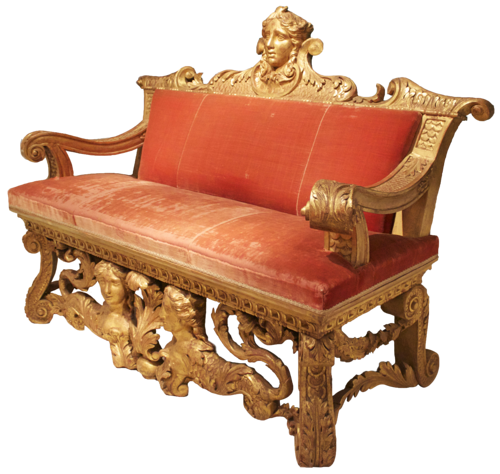The Devonshire Inheritance: Five Centuries of Collecting at Chatsworth was an exhibition of material from Chatsworth, the primary home of the Cavendish family—the earls and then dukes of Devonshire—since the 16th century.
One of the most beautiful country houses in England, Chatsworth contains fabulous treasures of every kind and from every period and region of the world. This exhibition presented a unique opportunity to see great works of art, including rare cabinet paintings, old master and architectural drawings, masterpieces of the great gold- and silversmiths, porcelains, clocks, gems and jewelry, natural curiosities, scientific instruments and mechanical devices, early photographs, and books and manuscripts from the greatest private library in the world.
The guest curator of the exhibition was Nicolas Barker, formerly Deputy Keeper at the British Library, Assistant Keeper at London’s National Portrait Gallery, a visiting professor at the University of California at Los Angeles, and a fellow of the British Academy. He is the author of more than 20 books.
Composed of more than 200 works of art, the exhibition highlighted the family’s private collection, not normally on view to the public and rarely exhibited previously. It presented a comprehensive portrait of five centuries of artistic connoisseurship and intellectual pursuits and was organized chronologically by generation, the objects included in each section having been carefully selected to illustrate the interests and historical roles played by successive family members. Bess of Hardwick, one of the most remarkable figures of Elizabethan England and from whose second son (the first Earl of Devonshire) the present line of dukes descends, built the first Chatsworth and was represented in the exhibition by early architectural drawings and a rare letter from Queen Elizabeth I.
The first earl took a serious interest in the New World, and he was represented by a map of Virginia by John Smith and books by Thomas Hobbes, the great philosopher and tutor to the earl’s children. The second earl died young, but his wife was patron to many writers, including Ben Jonson, whose books are preserved at Chatsworth. Their son took a prominent part at court and in theatrical masques, and designs for the latter by Inigo Jones were included in the exhibition. The fourth earl began the now world-famous collection of drawings by Renaissance masters (including Guercino) and took advantage of exiled Huguenot goldsmiths. His son, the second duke, was one of history’s greatest collectors, acquiring drawings by Raphael, Titian, Dürer, Rembrandt, and Rubens, among others included in the exhibition, as well as classical gems that he stored in specially made Boulle cabinets, one of which was on display.
In the 18th century, the fourth duke, through marriage, inherited the estate of the third Earl of Burlington, who, among other things, was a great patron of Handel and Pope. Burlington had formed an outstanding collection of European paintings, commissioned superb furniture, and owned a library that included most of the surviving architectural and other drawings by Palladio and Inigo Jones; drawings by and busts of both were included in the exhibition. Many of the finest pieces of furniture and works of art at Chatsworth derive from this inheritance, and it was this duke, too, who began the rebuilding of Chatsworth. The fourth duke’s cousin, Henry Cavendish, was the greatest chemist of his time and a pioneer in the study of electricity. His exquisitely made instruments were on display, as were his science books, including Copernicus’s revolutionary discovery of the solar system and the first atlas of England. The fifth duke and his beautiful wife, Georgiana, one of the most famous—even notorious—figures of the 18th century, added many notable books to the Chatsworth library, and the duchess also collected minerals.
Their son was devoted to Chatsworth, and besides greatly enlarging it, wrote an entertaining guidebook to the house. He also collected illuminated medieval manuscripts and magnificent bindings, fine silver, ancient and modern sculpture, and fabulous objects such as the jeweled Kniphausen hawk, narwhal tusks, and Henry VIII’s microscopically carved rosary; all were on view in the exhibition. Natural history and its depiction were of great interest to the seventh duke, who began a collection of exquisitely colored books cataloguing birds and flowers. The next generation’s interests were represented by relics of the Diamond Jubilee Ball in 1897, the Ascot Gold Cup, and other sporting events.
Today, given the interests of the present 11th Duke and Duchess of Devonshire, the collections of Chatsworth have entered a new phase. The exhibition illustrated their great patronage of contemporary artists with family portraits by one of England’s most important late 20th-century painters, Lucian Freud.
A fully illustrated, 450-page catalogue, The Devonshire Inheritance: Five Centuries of Collecting at Chatsworth, accompanied the exhibition. In addition to individual entries and full-color illustrations of all objects in the exhibition, the catalogue also includes a foreword by His Grace, the Duke of Devonshire. Essays by Nicolas Barker discuss the chronology of the family, the growth of the Chatsworth collection, and the significance of British connoisseurship. Diana Scarisbrick, independent curator and recognized scholar of jewelry and gems, contributed an analysis of the jewels in the collection, highlighted by the Devonshire Parure, a suite of jewels made to be worn at the coronation of Czar Alexander II of Russia in 1856. The catalogue also includes a family tree, biographical information, a bibliography, and an index. It is published and distributed by Art Services International, Alexandria, Virginia.














